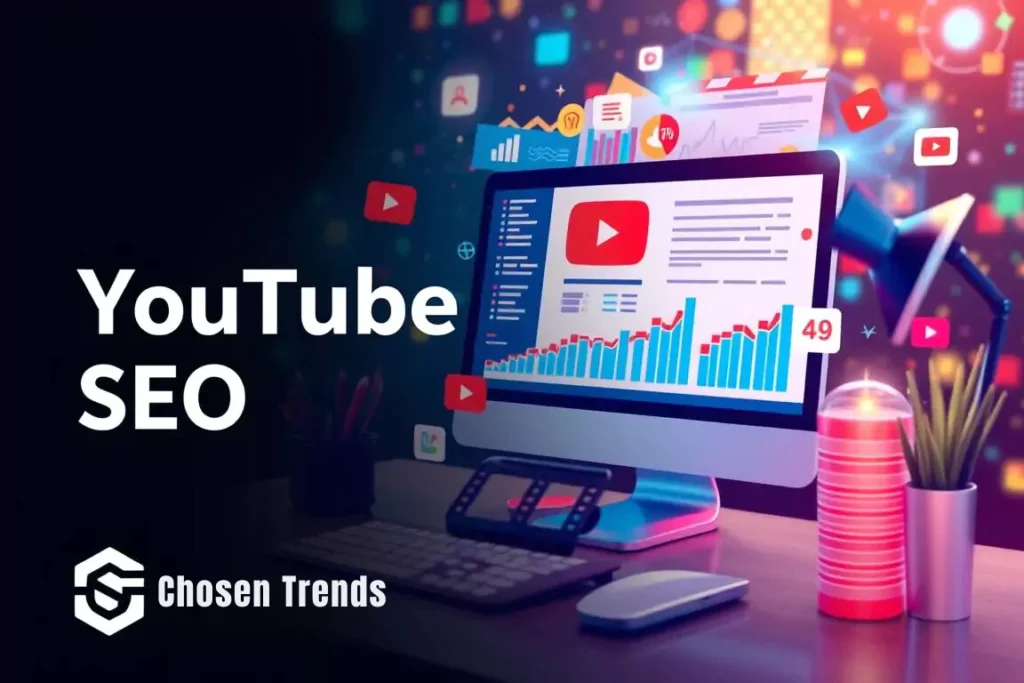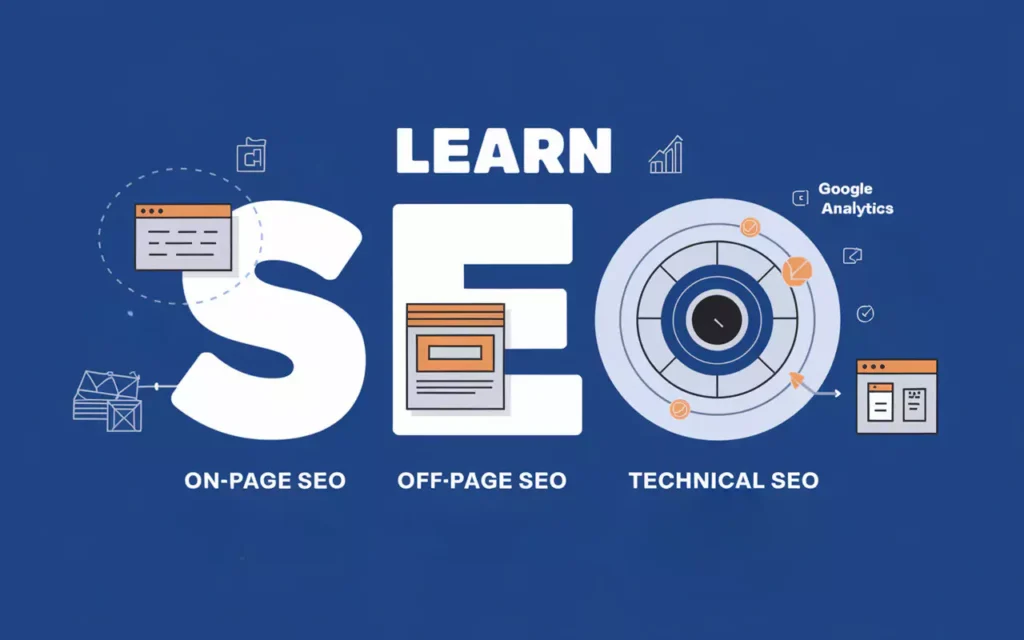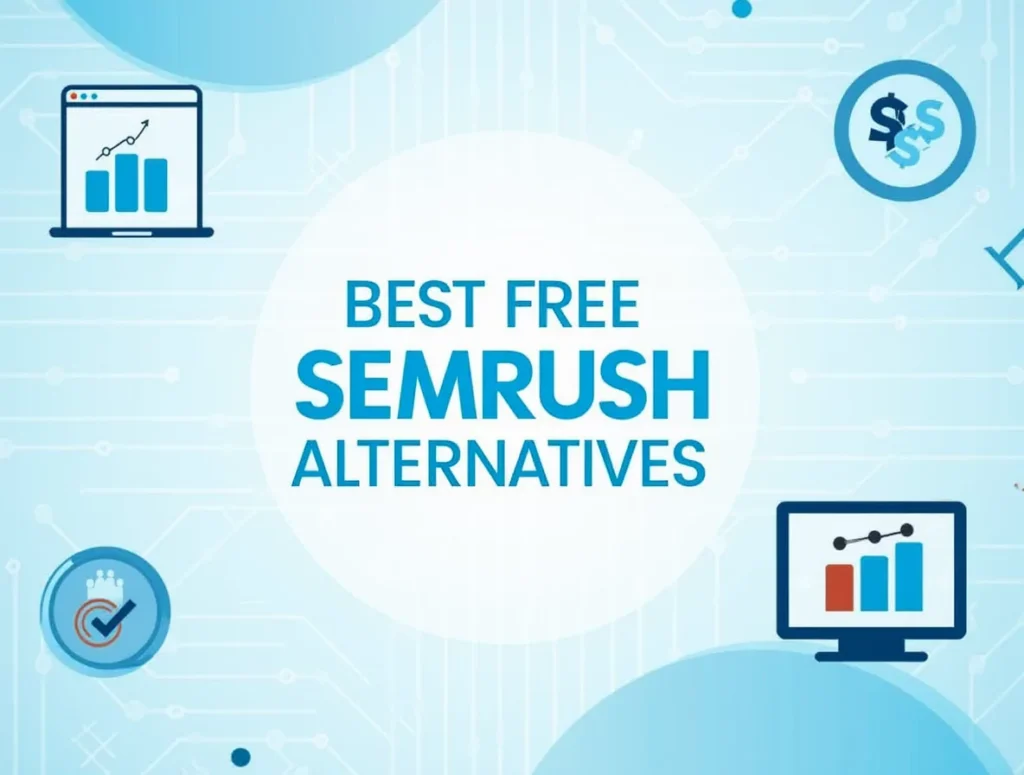YouTube SEO Optimization: How to Rank Your YouTube Videos
Did you know over 500 hours of video are uploaded to YouTube every minute? In this crowded digital world, standing out can be tough. But, mastering YouTube search engine optimization (SEO) is the key to success.
This guide will share secrets to boost your YouTube video rankings. You’ll learn how to drive more organic traffic and grow your audience. We’ll cover everything from understanding the YouTube algorithm to creating eye-catching thumbnails. Get ready to transform your YouTube presence and reach new heights.
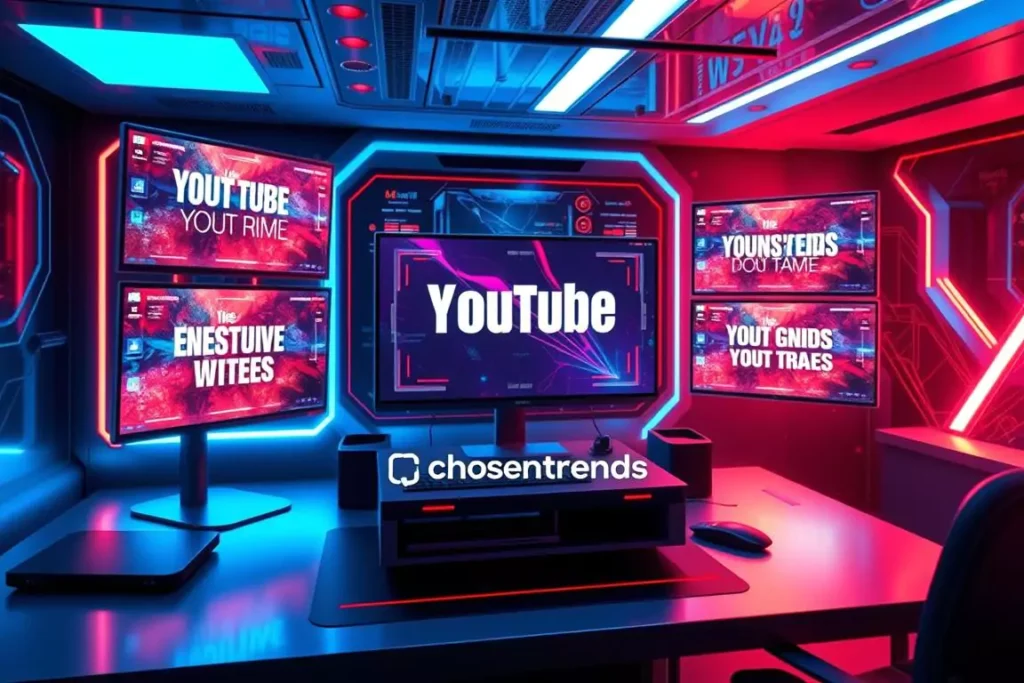
What is YouTube SEO & How does YouTube SEO work?
To rank your YouTube videos well, you need to know YouTube SEO basics. This means understanding the YouTube algorithm, what makes videos rank high, and how user actions affect your strategy.
How the YouTube Algorithm Works
The YouTube algorithm aims to show users the best content. It looks at video details, how viewers interact, and other platform behaviors. By matching your content to what the algorithm likes, you can get more views and reach more people.
Key Ranking Factors for YouTube Videos
Video title, description, and tags: Using search engine optimization keywords algorithm can help people find your video.
Video content quality and relevance: The YouTube algorithm favors videos that are valuable and meet the user’s search needs.
Watch time and user engagement: Metrics like average view duration, likes, comments, and shares show the algorithm that your video is engaging and worth promoting.
The Role of User Engagement Metrics
User engagement metrics are key to your YouTube SEO ranking. The algorithm likes content that keeps viewers interested and encourages them to interact, share, and subscribe. By making high-quality, engaging videos, you can get more people to see your channel.
“The key to YouTube SEO success is understanding the platform’s algorithms and aligning your content strategy to meet their evolving preferences.” – SEO Expert, Jane Doe
YouTube SEO Tips: How to Optimize YouTube Channel’s Visibility
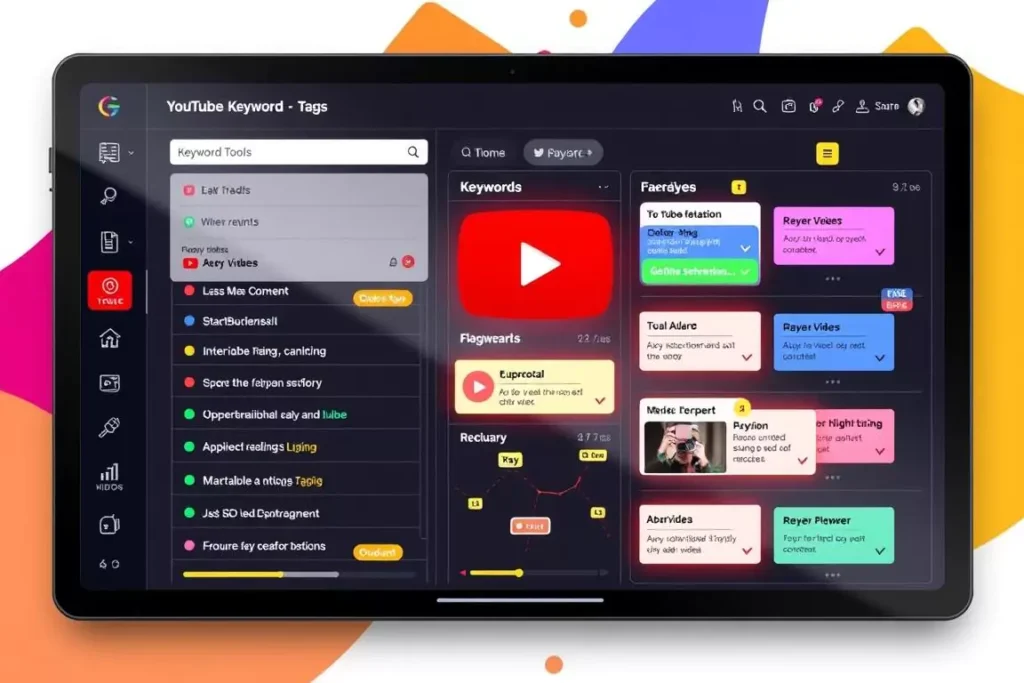
Optimize Your Channel Description for Better Search Visibility
A well-crafted channel description is more than just an introduction—it’s a strategic opportunity to boost visibility. Use clear, engaging language that resonates with your target audience, and include high-value keywords that reflect your niche.
The first 100-150 characters are crucial since they’re displayed in search results, so ensure they effectively summarize your channel’s purpose. This helps search engines understand your channel and attracts potential viewers with relevant interests.
Use Effective Keywords in Your Channel Name and About Section
Incorporate relevant keywords directly into your channel name and “About” section, as they carry significant weight in search rankings. For example, if your channel focuses on healthy recipes, include terms like “Healthy Meals” or “Quick Recipes” in your branding. This alignment with user search intent not only improves discoverability but also establishes a clear connection with your audience.
Create Playlists to Improve Channel Organization and SEO
Playlists are a powerful tool for structuring your content while boosting engagement. Group videos by theme or topic, using descriptive titles and keywords to improve their chances of appearing in search results.
Playlists not only make it easier for viewers to explore your content but also encourage them to watch multiple videos, increasing watch time—a key ranking factor.
Optimize Your Channel Tags for Improved Search Ranking
Tags help categorize your content and align it with specific search terms. While less visible to viewers, well-chosen tags improve your channel’s discoverability. Focus on both broad and niche keywords relevant to your content. Avoid stuffing irrelevant tags, as this can dilute your channel’s SEO and lead to poor recommendations.
Use Community Posts to Engage and Grow Your Channel Audience
Community posts are an underrated feature that can significantly enhance audience engagement. Share polls, updates, or behind-the-scenes content to keep your subscribers invested in your journey.
Engaged audiences are more likely to share, comment, and interact with your videos, boosting your overall performance in search algorithms.
Leverage Analytics to Understand and Optimize Performance
Analytics are your secret weapon for improving your channel’s reach and retention. Pay close attention to:
Watch Time: Tracks how long viewers stay on your content, a crucial metric for rankings.
Impressions Click-Through Rate (CTR): Indicates how effective your thumbnails and titles are at drawing attention.
Traffic Sources: Helps you identify where your viewers are coming from—search, external websites, or recommendations.
Unique Viewers: Measures the size of your audience and helps track growth.
By analyzing these metrics, you can refine your strategy to focus on what works and address areas needing improvement.
Through these actionable strategies, you can build a channel that not only attracts more views but also retains a loyal audience, giving your content the visibility it deserves.
YouTube SEO Optimization: How to Rank Your YouTube Videos
Conduct Keyword Research
Keyword research is the backbone of creating content that resonates with your audience and ranks well in search results. Here’s how to conduct effective research:
Use Google Trends for Real-Time Insights: Google Trends is an excellent tool for analyzing search interest over time. It helps you identify trending topics and compare potential keywords. For instance, if you’re exploring “keywords for YouTube” or “YouTube keyword research,” Trends can show you when interest in these topics peaks and guide your content planning around high-demand periods.
Leverage Keyword Planner for Precise Targeting: Google’s Keyword Planner is perfect for uncovering specific search terms with high volume and low competition. Use it to refine your list by focusing on terms like “YouTube keyword research” and related phrases. This ensures your content targets what users are actively searching for, maximizing its reach.
Optimize for Platform-Specific Searches: Combine insights from general tools with platform-specific research. Use the platform’s search bar autocomplete to find additional “keywords for YouTube” that people are already searching for. This approach lets you align your content with real audience queries, increasing visibility.
By incorporating tools like Google Trends and Keyword Planner, and focusing on platform-specific terms, you can master the art of keyword research. This ensures your content is relevant, discoverable, and positioned to attract the right audience.
Optimize Your Video Titles and Descriptions
Creating catchy youtube titles is key to your search engine strategy. Your title is often the first thing people see. It decides if they click on your video. Using a youtube titles generator can help you make titles that grab attention and show value.
To make your titles work best, follow these tips:
Incorporate Relevant Keywords: Find out what your audience is searching for. Then, add those keywords to your titles. This makes your video show up in search results, attracting the right viewers.
Create Curiosity and Intrigue: Make titles that make people curious. Use interesting words, ask questions, or hint at what’s inside. This grabs their attention.
Emphasize the Benefits: Show what your video offers, like solving a problem or teaching something new. People are more likely to click if they think it meets their needs.
Keep it Concise and Scannable: Try to keep your titles under 60 characters. This makes them easy to read on any device.
“The right video title can make all the difference in driving views and engagement. It’s the first impression that can make or break your video’s success.”
By using these tips and a youtube titles generator, you can make titles that draw in your audience. This boosts your search rankings and brings more views to your videos.
Crafting Compelling Video Descriptions That Drive Rankings
YouTube SEO optimization focuses a lot on the video description. It’s key to making your video stand out. A good description can draw in more viewers and improve your video’s ranking. Let’s explore what makes a great video description for better youtube seo optimization and seo optimization youtube.
Essential Elements of an SEO-Friendly Description
A top-notch video description should have a few important things:
A catchy intro that quickly tells what the video is about
Keywords and phrases that fit well in the description
A clear call-to-action (CTA) to get viewers involved
Links to your website or social media
A short summary of the video’s topic and main points
Strategic Keyword Placement in Descriptions
Using the right keywords in your description is key for better youtube seo optimization and seo optimization youtube. Put your main keywords at the start of the description. This is where YouTube’s algorithm pays most attention. Also, sprinkle in secondary keywords to make the description more relevant and easy to find.
Using Links and CTAs Effectively
Links and CTAs in your description can boost engagement and conversions. Add links to your website or other videos to encourage viewers to dive deeper. A compelling CTA can also help, like asking viewers to subscribe or visit a specific page. This can greatly improve your video’s performance and ranking.
“Remember, a well-crafted video description is not just about providing information – it’s a powerful tool to improve your youtube seo optimization and seo optimization youtube efforts, drive viewer engagement, and ultimately, boost your video’s visibility and rankings.”
Strategic Tag Selection and Implementation
In YouTube SEO, choosing the right tags is key to making your videos easier to find. Tags are like keywords that help YouTube’s algorithm understand what your video is about. Using tools like the YouTube Keyword Tool can help you pick the best tags for your content.
Start by doing deep keyword research. Use tools like the YouTube Keyword Tool to find keywords that people are actually searching for. Make sure your tags match what your video is about.
Do thorough keyword research to find the best tags for your video.
Focus on long-tail keywords because they have less competition and are more likely to convert.
Don’t use tags that are too general or don’t fit your video. It can hurt your video’s visibility.
Keep up with the latest trends and popular search terms in your niche to keep your tags relevant.
After you have your list of tags, it’s important to use them correctly. Put your tags in the right places in your video’s metadata. This makes them easy for YouTube’s algorithm to find.
“Optimizing your tags is a game-changer for YouTube SEO. It’s like having a secret decoder ring that helps your videos stand out in the vast digital landscape.”
By choosing and using tags wisely, you can make your YouTube videos easier to find. This can lead to more people watching your videos and more engagement on your channel.
Creating Custom Thumbnails That Increase Click-Through Rates
Custom thumbnails are key in YouTube optimization. They draw viewers and boost click-through rates. A good thumbnail can make your video stand out and get more views.
Thumbnail Design Best Practices
Designing a great thumbnail starts with the basics. The best thumbnails use bright colors, clear text, and images that show what your video is about. Stay away from generic images or too much clutter.
Use high-quality, visually striking images that capture the essence of your video
Incorporate concise, attention-grabbing text that conveys the video’s key message
Leverage bold colors and contrasting elements to make your thumbnail stand out
Ensure the design is clean, uncluttered, and easy to digest at a glance
Tools for Creating Eye-Catching Thumbnails
There are many tools to help you make great thumbnails. You can use graphic design platforms, image editing software, or even YouTube’s built-in tools. Canva, Photoshop, and YouTube Studio are popular choices.
“A well-designed thumbnail can be the difference between a video that gets discovered and one that gets overlooked. Investing time and effort into your thumbnails is a surefire way to improve your youtube optimization and get found on youtube.”
By making custom thumbnails that follow best practices, you can make your YouTube videos more visible. This will lead to more views and engagement.
Create a video Trailer & shorts
A compelling video trailer and engaging shorts are essential tools for boosting your channel’s visibility and capturing attention quickly.
Craft a Dynamic Channel Trailer: Your channel trailer acts as your first impression. Keep it short, around 30–60 seconds, and highlight what your channel is about. Use impactful visuals, clear messaging, and a strong call to action to encourage viewers to subscribe or explore more of your content. Focus on showcasing your unique value and setting expectations for your audience.
Leverage Shorts for Quick Engagement: Shorts are a fantastic way to deliver bite-sized, engaging content that grabs attention instantly. Use trending topics, challenges, or quick tips related to your niche to attract viewers. Keep them visually dynamic and concise, typically under 60 seconds, to maximize engagement.
By creating a strong trailer and consistently posting high-quality shorts, you can build brand awareness, hook new viewers, and encourage them to stay and explore your content. This strategy is ideal for expanding your reach and boosting audience retention.
Set Up Playlists to Organize Content and Improve SEO
Optimizing your YouTube channel’s playlists and end screens can boost your videos’ rankings. By curating content into playlists and using end screens wisely, you make your videos more engaging. This signals to YouTube that your content is high-quality.
Playlist Optimization Techniques
Well-structured playlists can increase watch time and encourage viewers to explore more. To optimize your playlists, try these techniques:
Group related videos together: Organize your videos by theme or topic for a seamless experience.
Use descriptive playlist titles and descriptions: Make sure your titles and descriptions are informative and include keywords.
Optimize playlist order: Place your strongest or most popular videos first to keep viewers engaged.
End Screen Strategy and Implementation
End screens are interactive elements at the end of your videos. They offer a chance to engage further with your content. Using end screens can boost viewer engagement and your YouTube SEO:
Promote your other videos: Recommend related videos or playlists to keep viewers watching.
Encourage channel subscriptions: Invite viewers to subscribe for more videos and YouTube SEO insights.
Incorporate clickable elements: Make it easy for viewers to take action, like watching another video or visiting your website.
Mastering playlist optimization and end screen implementation can help you use YouTube’s algorithms to your advantage. This can lead to more views, increased watch time, and better YouTube SEO performance.
Analyzing YouTube Analytics for SEO Performance
Using YouTube Analytics is key for checking and boosting your YouTube SEO. It helps you see how your videos do and find ways to get better. You can track viewer interest and look at search terms to improve your strategy.
Watch time is a big deal. It shows how long people watch your videos. Knowing which ones they like helps you make more of the same. Also, looking at who watches your videos and where they are can help you plan better.
The YouTube search report is super useful. It shows you which keywords bring people to your videos. This helps you pick the right words for your titles and research new keywords. Plus, it lets you see if your SEO is working by tracking keyword rankings.
Share Your Videos Across Social Media Platforms
Expanding your reach beyond your main platform is a powerful way to drive more views and attract a broader audience. Here’s how to effectively share your videos on social media:
Cross-Promote on Multiple Platforms: Share your videos on platforms like Facebook, Instagram, Twitter, LinkedIn, and TikTok. Tailor your posts to each platform’s audience and format. For example, create teaser clips for Instagram Stories or TikTok, and share full-length video links on Facebook or Twitter with engaging captions to drive traffic.
Use Hashtags and Keywords: Hashtags help categorize your content and increase discoverability. Use relevant hashtags for your niche on each social platform to help your content reach users who may not already follow you. Research trending hashtags to maximize engagement.
Encourage Sharing and Engagement: Actively ask your followers to share your videos with their network. This can exponentially increase your reach as social media platforms tend to prioritize content that generates interaction.
Join Niche Communities: Share your videos in online communities like Facebook Groups, Reddit threads, or specialized forums that align with your video topics. These groups often have highly engaged members who are more likely to view, comment, and share your content.
By sharing your videos across multiple social media platforms, you can amplify your visibility, engage a larger audience, and drive more traffic to your content. This approach not only helps in growing your audience but also enhances your channel’s overall success.
YouTube SEO, Optimization, and Search Engine Optimization Strategies
To make your YouTube videos more visible, you need a solid SEO plan. It’s not just about tweaking titles and descriptions. There are more ways to boost your video’s performance on YouTube and Google.
Using video transcripts and closed captions is key for YouTube SEO. They make your videos more accessible and help search engines understand your content. This can lead to better rankings and more people finding your videos.
Another important step is to strategically place keywords in your video’s elements. This means using target keywords in the file name, tags, and metadata. Aligning your video’s content with search queries can help it show up in search results.
But there’s more to YouTube SEO than just on-page optimization. Getting high-quality backlinks from other websites can also help. These backlinks tell search engines your content is valuable and should rank well.
By using these search engine optimization for youtube videos and optimization strategies, you can make your YouTube channel more visible. This will attract more targeted traffic to your content, helping your digital marketing efforts succeed. Learn SEO Basics
FAQs
YouTube SEO helps your videos show up better in search results. It’s key because it lets more people find your content. This can lead to more views and engagement.
The YouTube algorithm aims to show users the best content. It looks at things like video topic and keywords. It also checks how users interact with videos to rank them.
Important factors include the video title, description, and tags. It also looks at the transcript and thumbnail. Plus, how viewers engage with the video matters a lot.
Use your target keywords in the title. Make it clear and catchy. Try to spark curiosity. Use a title generator for ideas.
Your description should highlight the video’s key points. Include relevant keywords and links. A clear call-to-action can also help.
Start with keyword research to find good tags. Use a YouTube keyword tool to find the best ones. Mix broad and specific keywords for better visibility.
Custom thumbnails grab viewers’ attention. They help increase click-through rates. Eye-catching thumbnails can make your video stand out.
Consider adding video transcripts and closed captions. Optimize playlists and use end screens well. Analyze your YouTube analytics to see what works and what doesn’t.
